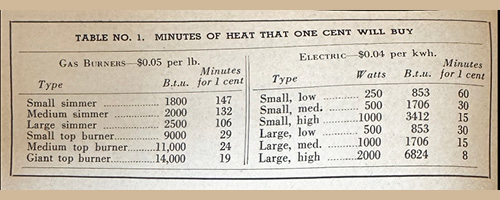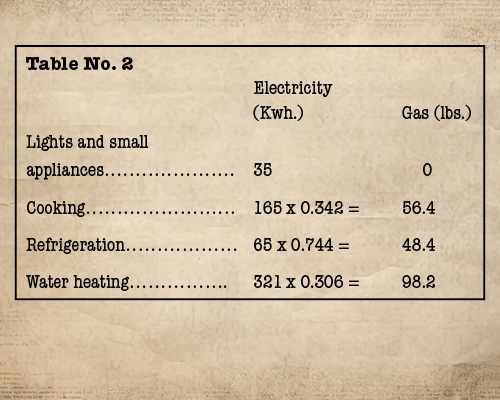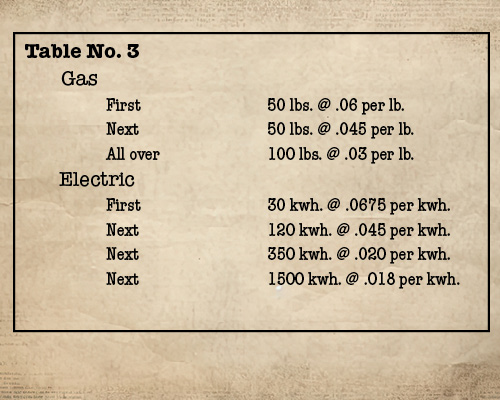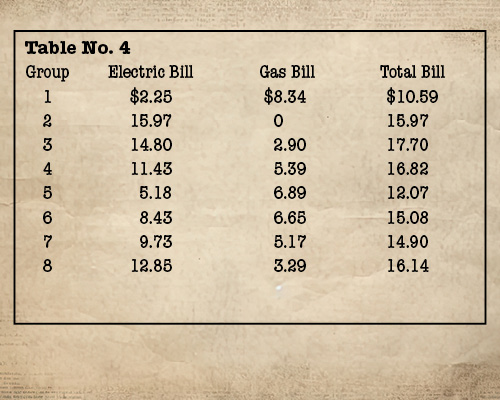
Even back in 1939, the fight for propane versus electricity in the heating market was top of mind for the industry — or the “butane man,” as this article from BPN’s debut issue called it. It’s fascinating to look back at history to see how things have not only changed but are also exactly the same. We’re still talking about why electricity doesn’t measure up to the benefits of propane, but we’re also in a vastly different realm of heating costs. We thought it would be fun to look back on this article by H.G. Laub of Southern California Gas Company — published in BPN’s June 1939 issue — to see what the talking points were for the average propane salesman and to marvel at how much pricing can change over the course of 85 years.
One Penny's Worth
A Comparative Analysis of Heating Costs: By Electricity and By Liquefied Petroleum Gas
By H.G. Laub, Southern California Gas Company
It would seem that any sales effort, to be successful, must be underlaid with basic knowledge of the product considered, and its merits compared with those of its competitors. The purpose of this article is to outline such a comparison between liquefied petroleum gases and electricity, indicating the economy that can generally be effected by using these gases instead of electricity. The butane man must learn the most fundamental lesson of salesmanship—to sell quality. Gas, whether it is manufactured, natural or butane, has so many inherent qualities that are infinitely superior to competition that even if gas were more expensive, it would still be demanded by the purchasing public.
Only a casual inspection of the merits of gas is necessary to prove its superiority over its nearest competitor—electricity. … Many advantages could be listed, space permitting, but since it appears that the “economy” point of view needs attention, a few simple arithmetical procedures are suggested, permitting the butane man to analyze his own case and by working out his own problem he should be able to remove a common fear.

For ranges, all burners are rated, gas in B.t.u. per hour, and electricity at watts per hour at each speed. Electric rates are usually so written that range consumption falls in the first block price following that allocated for lighting. Therefore, it is safe to use this price for comparative purposes.
Table No. 1 shows how long various kinds of burners can be burned for one cent. Table No. 1 is self-explanatory, but it is significant to note the amount of heat furnished by each type of burner as well as considering the burning time for one cent.
When it is desired to compare the entire domestic field, the consumption figures published by the electrical industry can be used as a basis for comparison. The A. G. A. Testing Laboratory has determined gas equivalents for 1 kwh. used for domestic purposes as follows:
- 0.342 lbs. butane = 1 kwh. for cooking.
- 0.306 lbs. butane = 1 kwh. for water heating.
- 0.744 lbs. butane = 1 kwh. for refrigeration.
The published figures of the electrical industry reveal the average consumption in kwh. for domestic appliances. By multiplying the electrical average by the A. G. A. gas equivalent, the corresponding average gas consumption is determined, as shown by the following figures:

For purposes of illustration the following rate schedules are assumed as typical:

The total utility bill for each group above would then be as follows:

From the above it seems that gas serves the customer in the most economical manner when the overall picture is considered. If the butane man will analyze his own field, he should be able to dispel all his fears, devoting his sales efforts to quality selling.
In this article only a few points have been covered. There is a world of material in the gas association’s literature available to those who will study.


